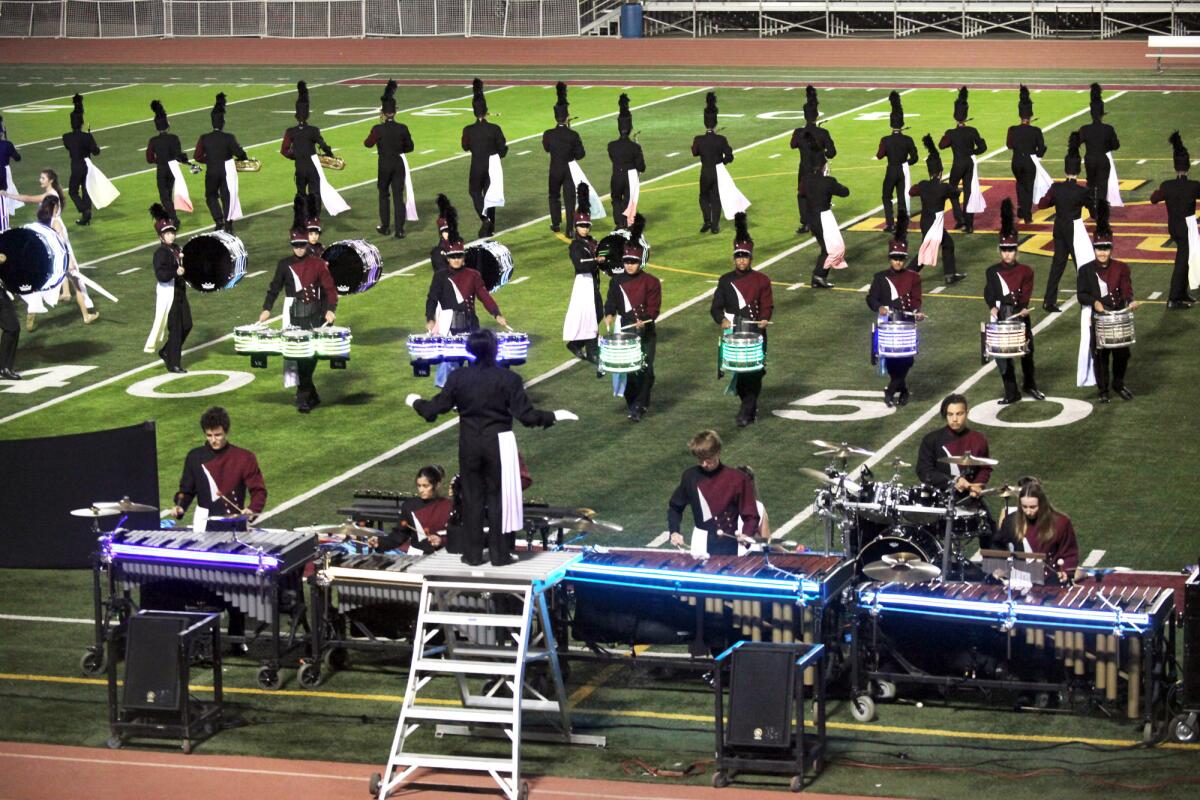Apodaca: Elections matter when it comes to schools

Elections, as they say, have consequences. And they unfailingly have consequences for our schools.
Last week’s midterm elections were no exception. Although overshadowed to a large degree by other highly contentious issues, education was very much on the ballot this time around.
California’s Proposition 28 is an obvious example. The measure — designed to offset the decades-long cuts in arts education that have largely impacted schools in lower income areas — would restore about $1 billion in K through 12 funding for music, theater, dance, graphic design and other arts curricula.
Proposition 28 doesn’t raise taxes but would instead be funded by requiring the state to set aside the equivalent of at least 1% of total public schools funding each year for arts education. Most of the money would go toward hiring new teachers.
The effort to pass the measure was led by Los Angeles Unified Supt. Austin Beutner, who argued that despite a record-high state budget and an Education Code that mandates schools provide music and arts education, only about 20 percent of the state’s schools have a full-time program. California — the beating heart of the entertainment industry — lags behind most other states in the share of students enrolled in arts courses.
The initiative passed easily, with more than 62% of voters approving. Opposition was practically nonexistent, with support coming not just from the arts community but from business leaders too. The only complaints centered not around its intent but on its method of funding because it would hamstring legislators during times of tight budgets.
Not to be flippant, but when has education funding ever made sense in California? Voters rightly recognized the importance of finding a reliable way to support arts education, which has been decimated since Proposition 13 in the late 1970s upended public school funding in the state.
Adopting new skills and enjoying new experiences aren’t just an antidote to aging but a means of having fun and staying part of the community, writes Daily Pilot columnist Patrice Apodaca.
During the past four-plus decades, the arts have been treated as a luxury only more affluent students in California could regularly access. For the rest, arts programs have typically been the first to be cut, particularly given the pressures on schools to drill students on “core” subjects such as math and reading to improve scores on standardized tests.
But the majority of voters apparently realized that we’ve paid a high price for our neglect of arts education. Indeed, rather than an extravagance, arts education is a demonstrably essential part of an effective, well-rounded curriculum.
Research has shown a strong link between arts education and academic success. Participating in arts programs enhances brain development, encourages creativity and collaboration, and hones communication, fine motor and emotional intelligence skills — qualities that will serve students well as they progress through academia and later when they enter the job market.
Arts are also an important way to engage children in the learning process. Students involved in arts programs are far less likely to drop out, more likely to achieve a high level of academic accomplishment and many times more likely to graduate from college.
Education experts have also stressed that arts education should be treated as a critical component of efforts to help students recover from the devastating educational, social and emotional impact of the pandemic. It can be a key means of reconnecting students with their peers and restoring lagging confidence after too much time spent in front of a computer screen.
The funding of arts education wasn’t the only educational issue figuring in the recent elections. In a sign of the times, the races for open spots on school boards — once among the most mundane of electoral contests — are now center stage in the nation’s culture wars.
In keeping with this troubling trend, many of the dozens of candidates for school boards throughout Orange County, and the nation, ran on platforms advocating “parental rights,” an innocuous-sounding term often used as a stand-in for anti-Critical Race Theory and anti-LGBTQ agendas.
The candidates that ran on these alarmist platforms, for the most part, lost to their more moderate, sensible opponents who understand that attempts to ban books, sanitize history and muzzle educators are driven by misinformation, ignorance and intolerance.
Nonetheless, this extreme movement isn’t going away. It’s still possible that other districts in Orange County will follow last spring’s vote by Placentia-Yorba Linda School District trustees to ban the teaching of CRT. The Orange County Board of Education trustees have taken a similar stand.
Nor is the controversy likely to die down anytime soon. After Placentia-Yorba Linda’s decision, Cal State Fullerton told school officials it would pause placement of its student teachers in district classrooms, citing concerns that the policies conflict with university goals that promote equity and inclusion in education.
The fact that the recent school board races were highly competitive, with greater sums of money going into campaigns and some candidates even making national news, shows us just how contentious issues surrounding education have become. And they also show us, whether for good or bad, that voters expect a voice in what students learn and, to a larger extent, in determining the very role of public education itself.
Another reason why elections matter.
All the latest on Orange County from Orange County.
Get our free TimesOC newsletter.
You may occasionally receive promotional content from the Daily Pilot.





